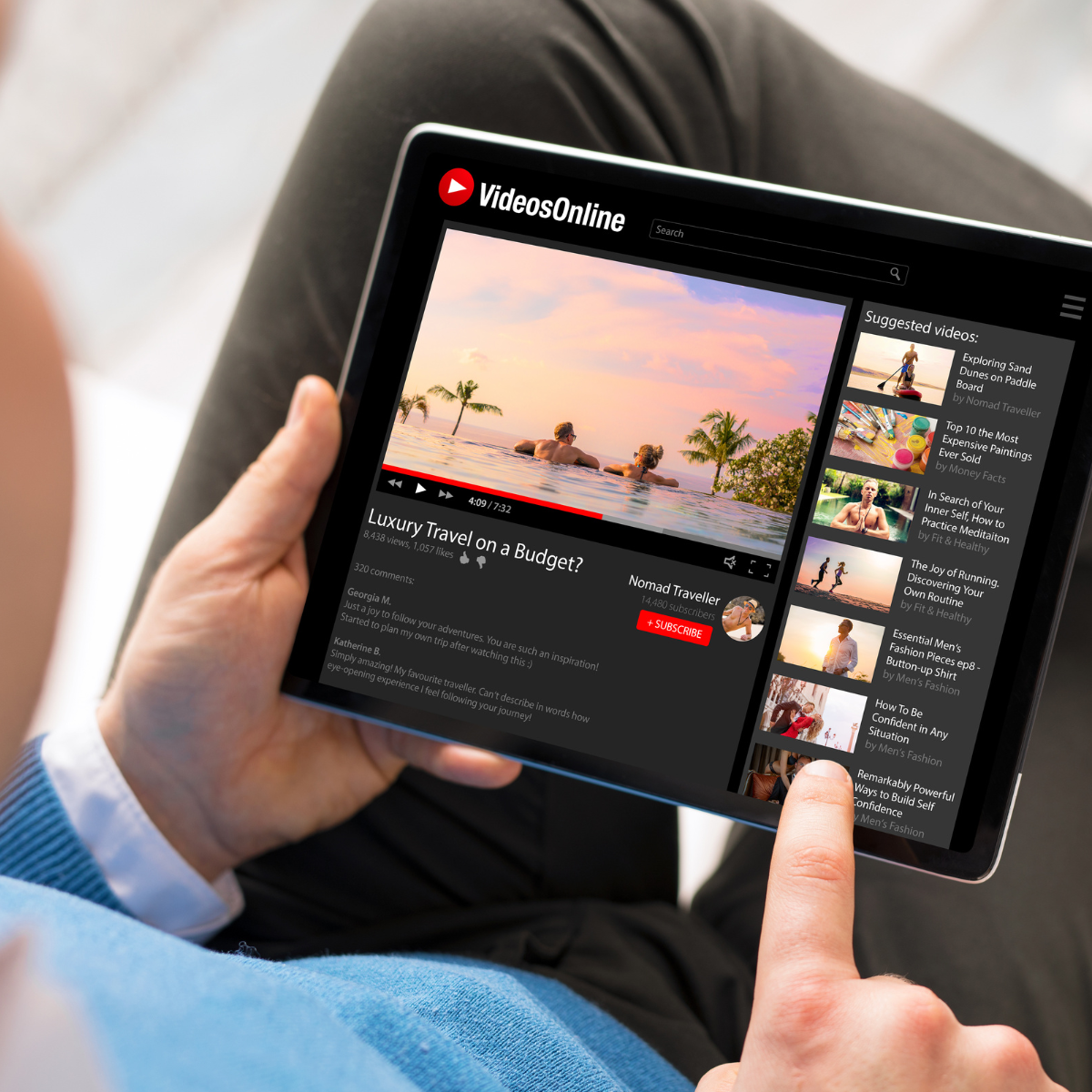In today’s fast-paced digital world, businesses are constantly searching for innovative ways to capture their audience’s attention. Video marketing has emerged as one of the most effective advertising tools, offering an engaging and dynamic way to connect with consumers. From boosting brand awareness to increasing conversions, video content has the power to convey messages more powerfully than text or images alone. With the rise of social media platforms and video-sharing websites, the demand for video content has never been higher. In this article, we will explore why video marketing is an indispensable tool for modern advertising strategies and how businesses can leverage it to reach their target audience and drive growth.

The Power of Video Marketing in Today’s Digital Landscape
Video marketing is transforming the way businesses communicate with their audience. As one of the most versatile formats, videos can convey a wealth of information in a short amount of time. Whether it’s through product demos, customer testimonials, or behind-the-scenes content, video allows brands to create an emotional connection with their viewers. Moreover, videos are shared widely on social media platforms, helping to boost visibility and attract new customers.
1. Enhanced Engagement and Retention
One of the key reasons why video is a powerful advertising tool is its ability to drive higher engagement rates. Compared to text and static images, video is inherently more captivating and can hold the viewer’s attention for a longer period. When done correctly, videos encourage viewers to interact with the content, whether by liking, commenting, or sharing.
Solution: By creating high-quality videos that are visually appealing and provide value to your audience, you can increase the likelihood of engagement. You can also include strong calls-to-action (CTAs) within the video to guide your viewers toward taking the next step in the customer journey. Additionally, consider incorporating interactive elements like polls or clickable links to further enhance engagement and create a more immersive experience for your audience.
2. Increased Brand Awareness
Video is one of the most effective ways to build brand awareness. As videos are highly shareable, they allow your content to spread across social media networks, blogs, and websites. With a compelling video, your brand can reach a broader audience and increase its visibility. According to studies, 64% of consumers are more likely to buy a product after watching a brand’s video on social media.
Solution: Use video marketing to highlight your brand’s values, showcase products or services, and tell your company’s story. Focus on creating videos that resonate with your target audience while aligning with your brand’s voice and identity. Consistency in your messaging and visuals can help reinforce your brand image, making it more memorable and recognizable.
3. Improved Conversion Rates
One of the most significant advantages of video marketing is its ability to increase conversion rates. Videos have been shown to boost landing page conversion rates by up to 80%. Whether it’s a product demonstration, a customer testimonial, or an explainer video, showing your product or service in action can help build trust and persuade potential customers to make a purchase.
Solution: Include videos in your sales funnels, especially on landing pages, to encourage conversions. A well-crafted video that explains the benefits of your product or service in a clear and engaging way can help address customer concerns and drive them toward making a purchase. Ensure that your video is optimized for both desktop and mobile viewing to cater to a larger audience.
4. Greater Reach Through Social Media Platforms
Social media platforms such as Facebook, Instagram, YouTube, and TikTok have become essential for businesses looking to connect with their audience. Video content is shared more frequently on these platforms compared to other types of content. With the ability to go viral, videos can help businesses expand their reach and attract a wider audience.
Solution: To maximize the impact of your video marketing strategy, tailor your content for each social media platform. Different platforms have varying audience preferences and content formats, so it’s important to customize your videos accordingly. For example, shorter, snappier videos perform well on Instagram and TikTok, while YouTube is better suited for longer-form content. Don’t forget to include hashtags, tags, and engaging captions to make your videos more discoverable.
5. Better Search Engine Rankings
Search engines like Google prioritize video content in their search results, especially on platforms like YouTube, the world’s second-largest search engine. Videos are more likely to rank higher in search results, improving your website’s SEO and increasing organic traffic. By incorporating videos into your website, blog posts, and social media pages, you can improve your search engine visibility and drive more traffic to your site.
Solution: Optimize your video content by including relevant keywords in the title, description, and tags. Creating engaging and informative videos that answer your audience’s questions or solve their problems can help you rank higher in search engine results. Be sure to include a transcript of the video or subtitles to further improve accessibility and SEO performance.
6. Building Trust and Credibility
Videos provide a unique opportunity to humanize your brand and build trust with your audience. Through videos, you can showcase customer reviews, product demonstrations, and real-life success stories, which can help build credibility. Authentic, transparent content that highlights the real-life benefits of your product or service is highly effective at fostering trust.
Solution: Use video marketing to showcase your brand’s personality, values, and mission. Customer testimonials and user-generated content can be particularly powerful in building trust, as they provide social proof that your product or service is worth investing in. Be sure to maintain transparency in your messaging and provide accurate information to avoid misleading your audience.
7. Mobile-Friendly and Accessible
With the increasing use of smartphones and mobile devices, video content is more accessible than ever before. Studies show that 75% of video content is viewed on mobile devices, making it crucial for businesses to create mobile-optimized videos. Mobile-friendly videos allow your audience to engage with your content anytime, anywhere, whether they are at home, at work, or on the go.
Solution: Ensure that your video content is optimized for mobile devices by keeping it short, visually engaging, and easy to view on smaller screens. Use responsive design for your website and ensure that videos load quickly and play smoothly on mobile platforms. With mobile usage on the rise, creating mobile-friendly videos is essential to capturing your audience’s attention.
8. Cost-Effective Advertising
While producing high-quality videos may seem expensive at first, the return on investment (ROI) for video marketing can be substantial. Compared to traditional advertising methods such as TV commercials or print ads, video marketing is more cost-effective, especially with the ability to distribute videos widely through digital channels. Additionally, video production costs have decreased over the years, making it more accessible for businesses of all sizes.
Solution: You don’t need a massive budget to create impactful videos. Start by creating simple yet engaging videos with your smartphone or a basic camera. Focus on storytelling and creativity rather than high-end production value. As your business grows, you can invest in professional video production to further enhance the quality of your content. Regardless of your budget, video marketing is an affordable and highly effective way to reach your target audience.
9. Video Analytics for Performance Tracking
Another significant advantage of video marketing is the ability to track and analyze performance. Through platforms like YouTube and social media channels, you can access detailed video analytics that show how viewers are engaging with your content. Metrics such as watch time, click-through rates, and audience retention rates can provide valuable insights into what’s working and what’s not.

Solution: Monitor your video analytics to understand viewer behavior and identify areas for improvement. If a video has a high drop-off rate, analyze the content to understand where it lost the audience’s attention. Use this data to refine your video strategy and create content that resonates better with your target audience.
Conclusion
In the digital age, video marketing is no longer optional; it is an essential component of a successful advertising strategy. Videos have the unique ability to engage, inform, and entertain your audience, making them an indispensable tool for businesses looking to build brand awareness, improve conversions, and drive growth. By leveraging the power of video, businesses can connect with their customers on a deeper level, expand their reach, and create a lasting impression that drives results. Whether you’re just starting with video marketing or looking to optimize your existing strategy, now is the perfect time to incorporate video content into your marketing plan. With its ability to captivate, inform, and persuade, video marketing is truly an invaluable asset for any modern business.

Leave a Reply